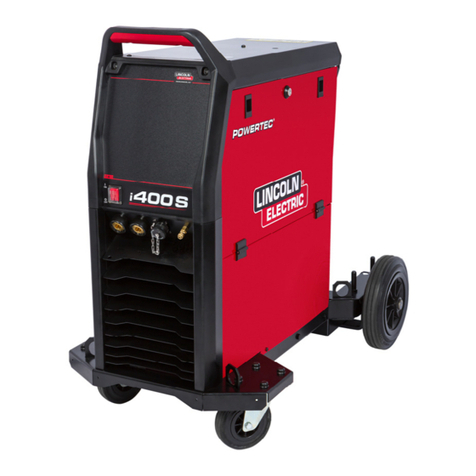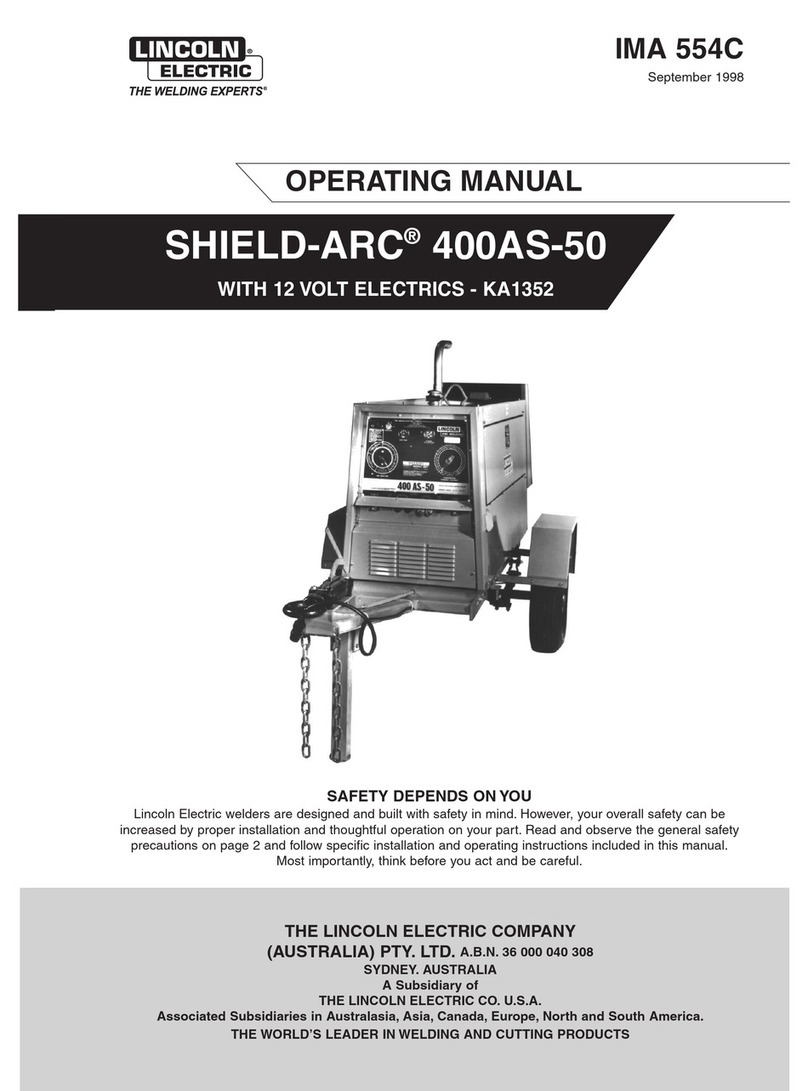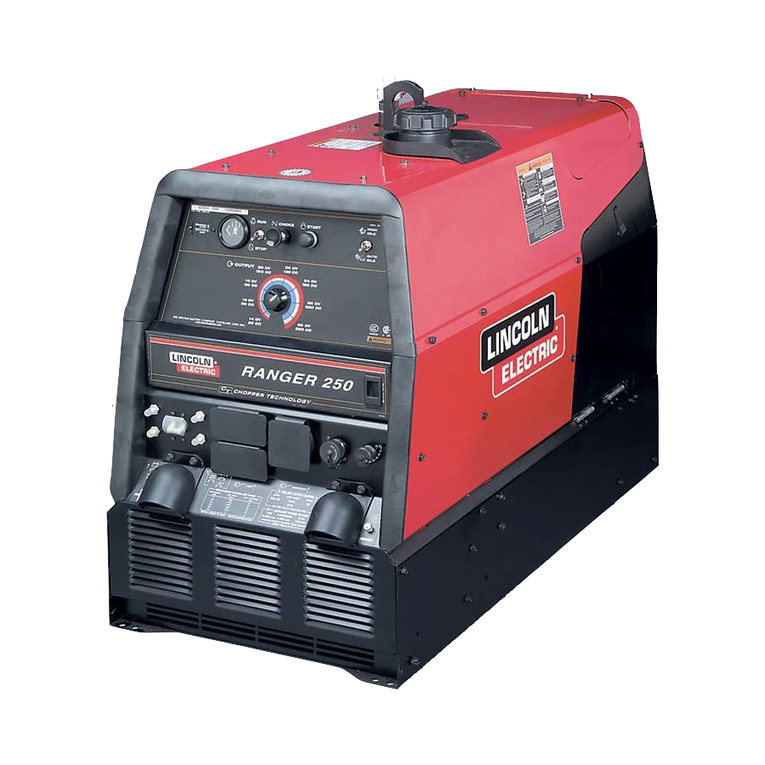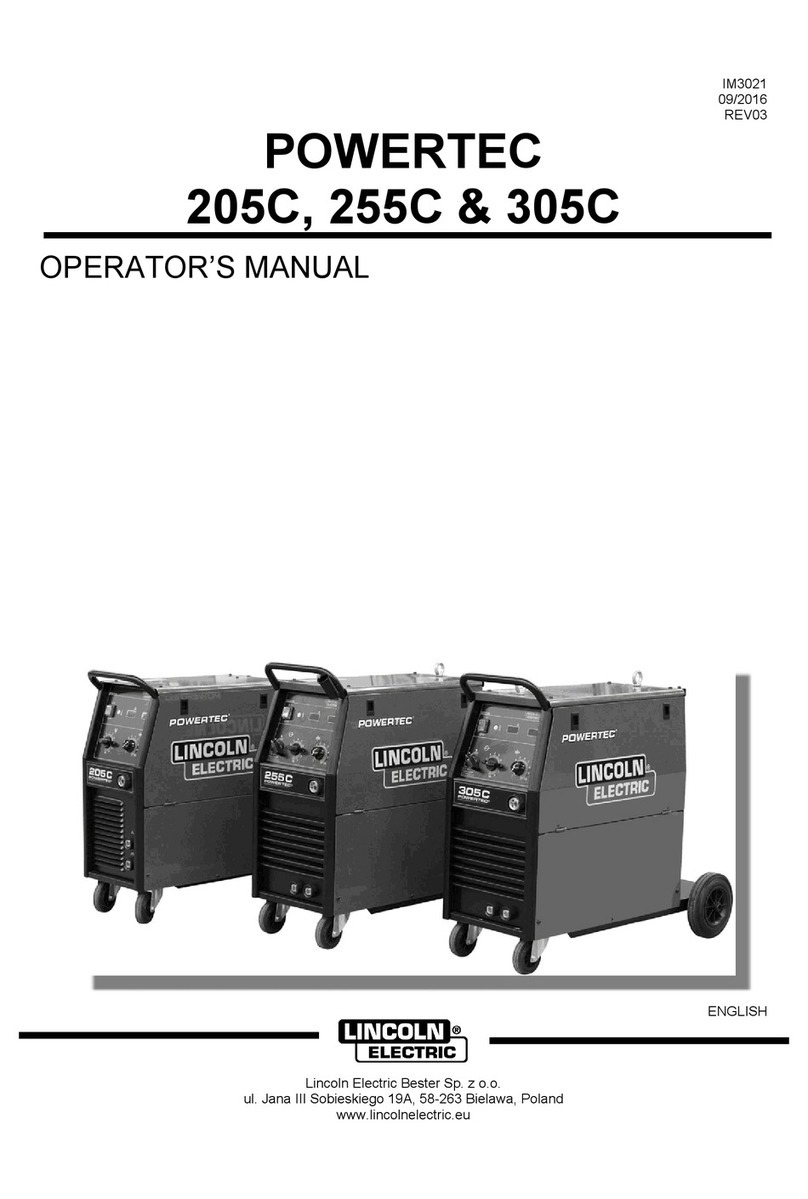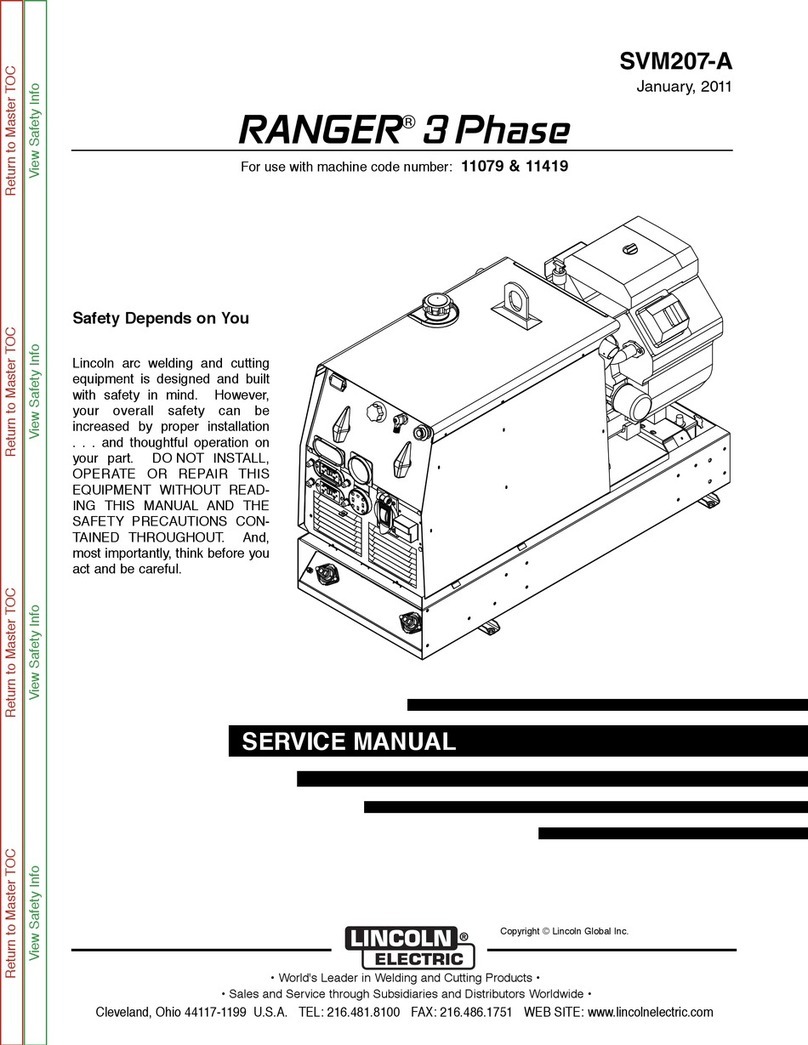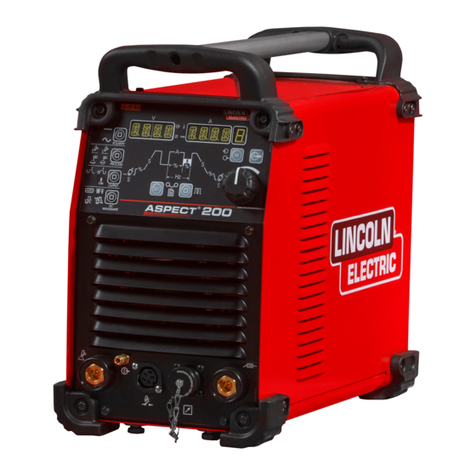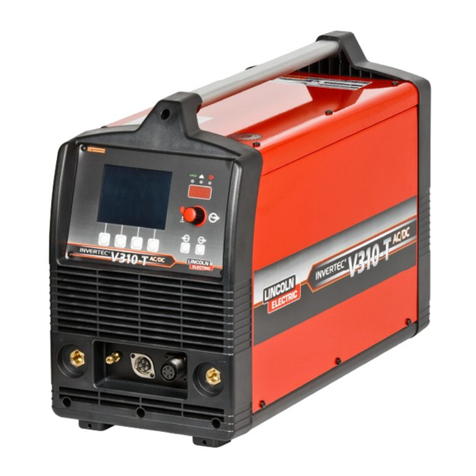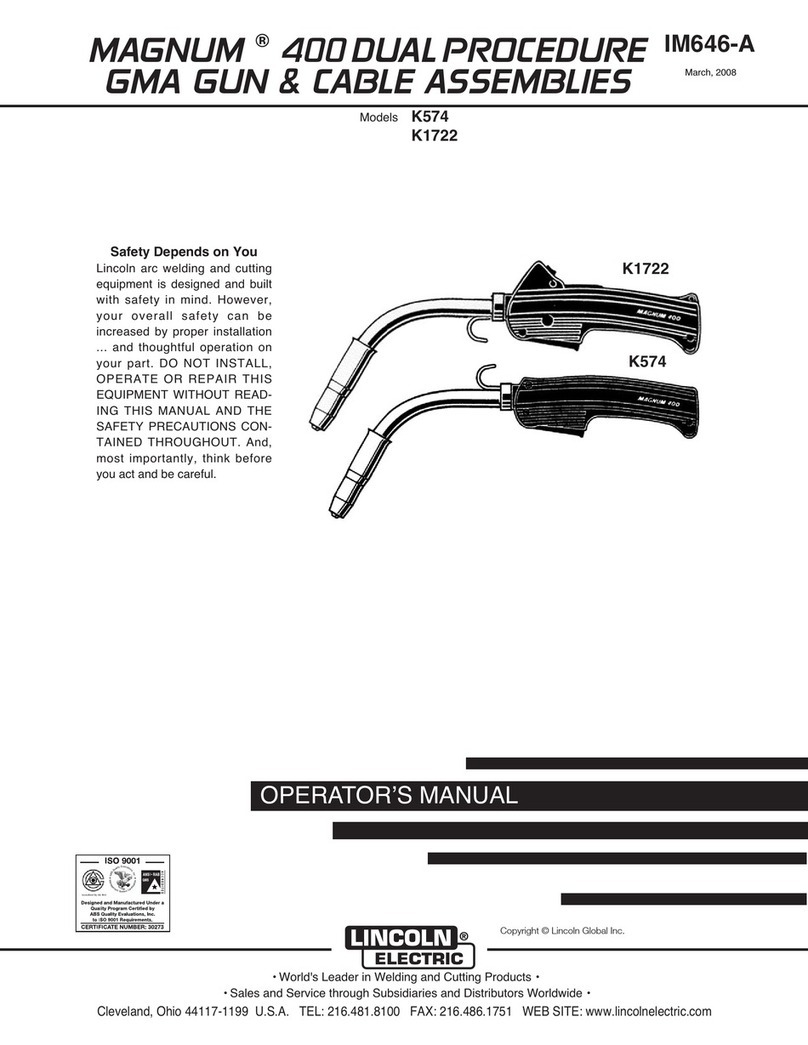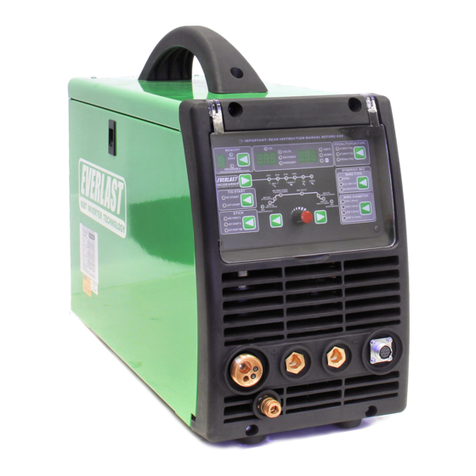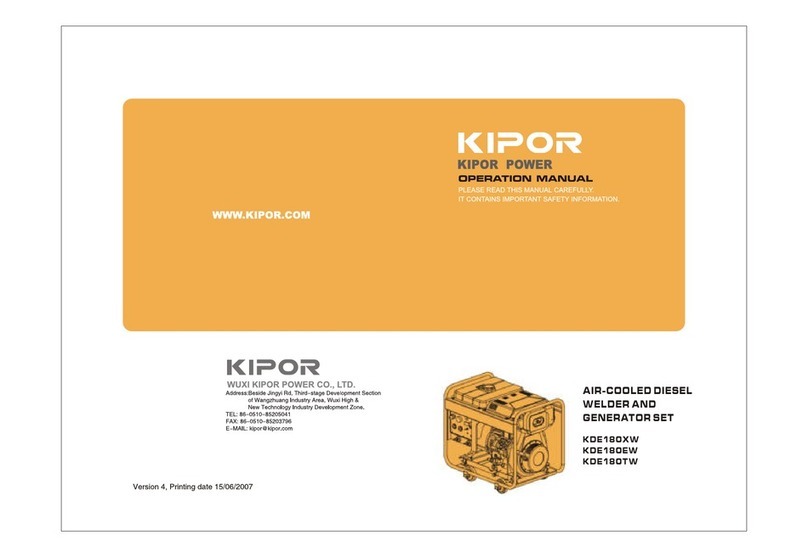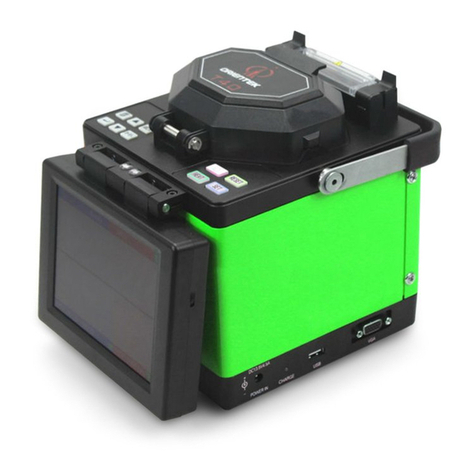
7
Installation and Operator Instructions
Read this entire section before installation or operation
of the machine.
Location and Environment
This machine can operate in harsh environments.
However, it is important that simple preventative
measures are followed to assure long life and reliable
operation:
•Do not place or operate this machine on a surface
with an incline greater than 15° from horizontal.
•Do not use this machine for pipe thawing.
•This machine must be located where there is free
circulation of clean air without restrictions for air
movement to and from the air vents. Do not cover
the machine with paper, cloth or rags when
switched on.
•Dirt and dust that can be drawn into the machine
should be kept to a minimum.
•This machine has a protection rating of IP23. Keep
it dry when possible and do not place it on wet
ground or in puddles.
•Locate the machine away from radio controlled
machinery. Normal operation may adversely affect
the operation of nearby radio controlled machinery,
which may result in injury or equipment damage.
Read the section on electromagnetic compatibility in
this manual.
•Do not operate in areas with an ambient
temperature greater than 40°C.
Duty Cycle
The duty cycle of a welding machine is the percentage of
time in a 10 minute cycle at which the welder can
operate the machine at rated welding current.
Example: 35% duty cycle:
Welding for 3.5 minutes. Break for 6.5 minutes.
Refer to the Technical Specification section for more
information about the machine rated duty cycles.
Input Supply Connection
Check the input voltage, phase, and frequency supplied
to this machine before turning it on. The allowable input
voltage is indicated in the technical specification section
of this manual and on the rating plate of the machine.
Be sure that the machine is grounded.
Make sure the amount of power available from the input
connection is adequate for normal operation of the
machine. The fuse rating and cable sizes are both
indicated in the technical specification section of this
manual.
This machine is designed to operate on engine driven
generators as long as the 230Vac auxiliary can supply
adequate power as indicated in the technical
specification section of this manual. The auxiliary supply
of the generator must also meet the following conditions:
•Vac peak voltage: below 410V.
•Vac frequency: in the range of 50 and 60 Hertz.
•RMS voltage of the AC waveform: 230Vac ± 15%.
It is important to check these conditions because many
engine driven generators produce high voltage spikes.
Operation of this machine with engine driven generators
not conforming to these conditions is not recommended
and may damage the machine.
Output Connections
A quick disconnect system using Twist-MateTM cable
plugs is used for the welding cable connections. Refer
to the following sections for more information on
connecting the machine for operation of stick welding
(MMA) or TIG welding.
Stick Welding (MMA)
First determine the proper electrode polarity for the
electrode to be used. Consult the electrode data for this
information. Then connect the output cables to the
output terminals of the machine for the selected polarity.
Shown here is the connection method for DC(+) welding.
Connect the electrode
cable to the (+) terminal
and the work clamp to the
(-) terminal. Insert the
connector with the key
lining up with the keyway
and rotate approximately ¼
turn clockwise. Do not over
tighten.
For DC(-) welding, switch the cable connections at the
machine so that the electrode cable is connected to (-)
and the work clamp is connected to (+).
TIG Welding
This machine does not include a TIG torch necessary for
TIG welding, but one may be purchased separately.
Refer to the accessories section for more information.
Most TIG welding is done with DC(-) polarity shown
here. If DC(+) polarity is necessary switch the cable
connections at the machine.
Connect the torch cable to
the (-) terminal of the
machine and the work
clamp to the (+) terminal.
Insert the connector with
the key lining up with the
keyway and rotate
approximately ¼ turn
clockwise. Do not over
tighten. Finally, connect
the gas hose to the gas regulator on the cylinder of gas
to be used.
VRD: Voltage Reduction Device
This machine is provided by an internal VRD (Voltage
Reduction Device) circuitry: this device reduces the
voltage at the output leads. The VRD is automatically



